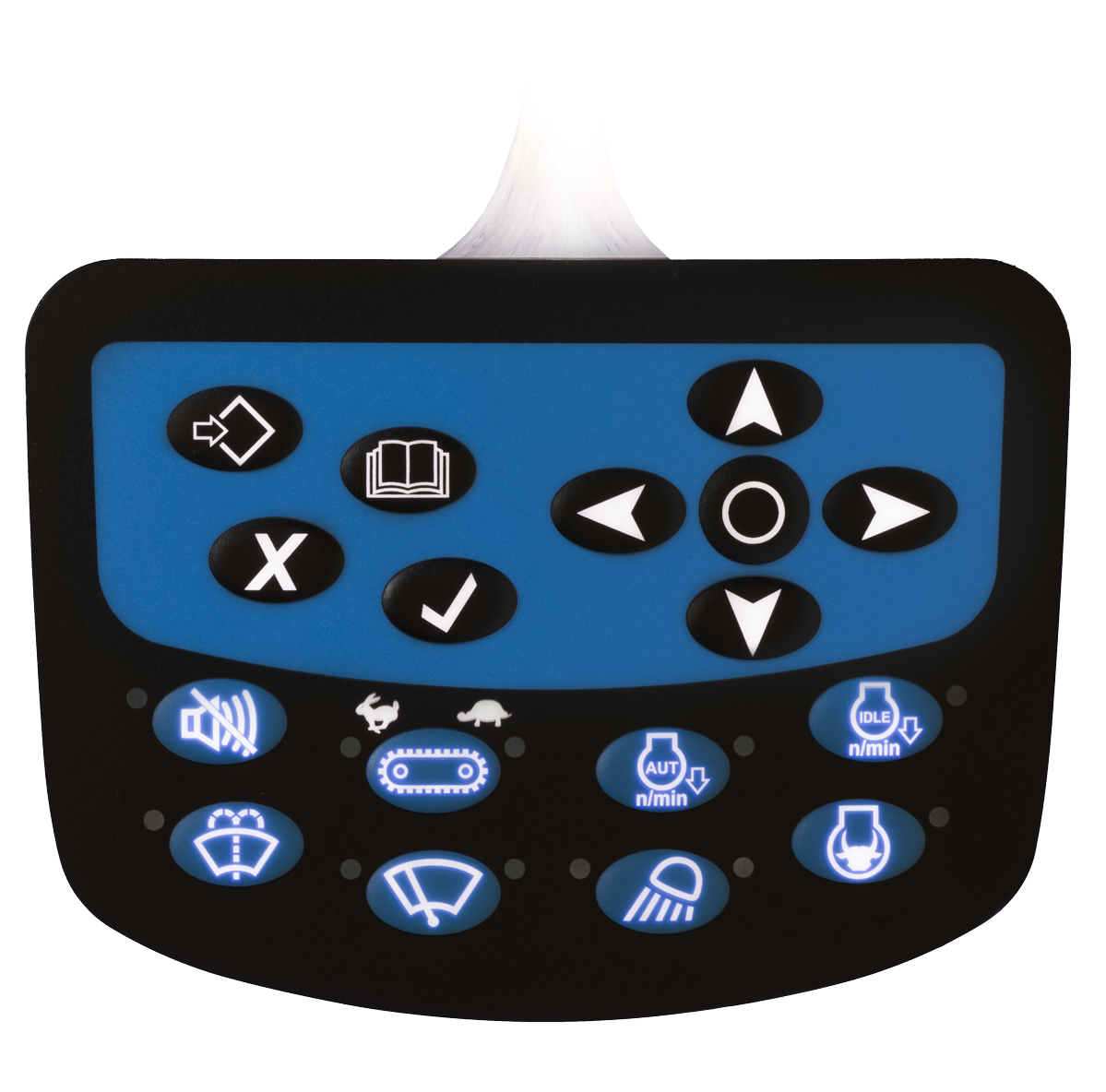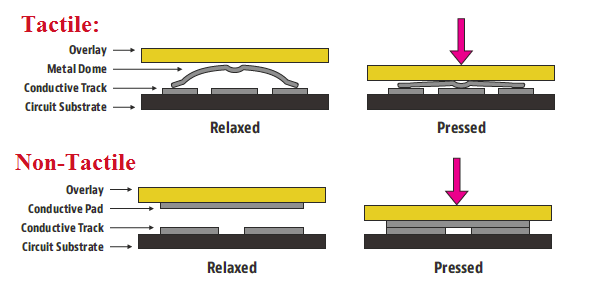Understanding the Relevance of Membrane Switches in Interface
Membrane buttons are essential parts in the layout of effective interface, promoting not only capability yet also enhancing visual charm and individual communication. Their special attributes, such as resistance to customizable styles and ecological aspects, make them ideal for a diverse range of applications throughout several industries. As we discover the future fads and different advantages connected with Membrane technology, it comes to be clear that these buttons are extra than simply parts; they stand for a convergence of technology and functionality. The implications of this modern technology on user experience deserve examining additionally.
What Are Membrane Switches?

The spacer layer, which includes glue residential or commercial properties, enables for the splitting up of the circuit layer from the overlay, guaranteeing that the button continues to be in a non-activated state until pressed. When stress is put on the overlay, it presses the spacer layer, connecting the void and finishing the circuit in the underlying layer. This layout not only reduces the physical space required for typical mechanical switches however additionally enhances the longevity of the tool, as Membrane buttons are typically immune to dust, wetness, and various other ecological variables.
Commonly located in applications varying from customer electronic devices to medical tools, Membrane buttons are important to modern-day technology, giving a straightforward and reliable user interface that straightens with contemporary design needs.
Advantages of Membrane Buttons
While many button innovations exist, Membrane Switches offer distinctive advantages that make them especially desirable in different applications. One of the main benefits of Membrane buttons is their compact style, which enables space-saving implementations in tools where realty is restricted. Their slim profile not only improves aesthetic appeal however additionally assists in light-weight building.
An additional substantial advantage is their resistance to environmental factors. Membrane switches are typically sealed against moisture, dust, and impurities, making them excellent for use popular settings, such as clinical gadgets and commercial equipment. This longevity expands the life expectancy of the button, decreasing upkeep prices and enhancing integrity.
Additionally, Membrane switches can be customized to satisfy details layout needs, including unique graphics and shades that improve user communication. Their responsive responses choices can also be tailored to give a rewarding individual experience. Furthermore, Membrane switches are economical, particularly in high-volume applications, as they can be generated effectively.
Applications in Numerous Industries

In the consumer electronic devices market, Membrane switches prevail in devices such as microwaves, washing devices, and remote controls. Their tactile comments and visual alternatives boost customer experience while offering a streamlined, contemporary look. Additionally, automobile manufacturers make use of Membrane switches in control panel controls and infomercial systems, where room is restricted, and individual engagement is important.
Additionally, the industrial industry leverages Membrane switches in control panels for equipment and equipment, enabling intuitive operation in often severe settings. Their resistance to chemicals and wetness makes sure durability and reliability in these applications. On the whole, the adaptability of Membrane Switches adds significantly to their widespread use, making them important in numerous technical domains.
Design Factors To Consider for Membrane Switches

When creating Membrane buttons, numerous key factors to consider have to be thought about to ensure optimum functionality and user experience. The option of materials is crucial; choosing long lasting, top quality substrates can boost the switch's durability and resistance to environmental factors such as wetness and temperature fluctuations.
Secondly, the design of the visuals overlay need to focus on clarity and ease of use. Icons and message must be understandable, and the format needs to promote instinctive interaction (membrane switches). In addition, tactile comments is essential; incorporating a responsive dome or various other mechanisms can improve the individual experience by providing physical confirmation of activation
An additional vital aspect is the button's electric efficiency. Designers have to make sure that the conductive traces are correctly developed to lessen resistance and stay clear of signal interference. This entails assessing the called for actuation pressure and making certain compatibility with the electronic components dig this they will user interface with.

Future Patterns in Membrane Technology
As modern technology proceeds to advancement, Membrane switches are poised to develop substantially, driven by innovations in products and manufacturing methods. One emerging fad is the unification of innovative materials, such as conductive inks and flexible substrates, which enhance longevity and reduce the overall weight of Membrane switches. These products not only boost the tactile response but likewise permit the style of buttons that can withstand harsher environmental problems.
Moreover, the combination of touch-sensitive technologies is changing typical Membrane Switches right into more interactive interface. Capacitive touch sensing units embedded within Membrane switch click resources panels can supply an extra responsive and instinctive customer experience, straightening with the growing demand for smooth, modern-day designs in consumer electronic devices.
Additionally, developments in printing strategies, such as digital and 3D printing, allow quick prototyping and personalization of Membrane switches. This flexibility allows producers to respond quicker to market demands and customer choices.
Lastly, sustainability is ending up being a significant focus, with makers checking out green materials and processes. As these patterns unfold, the future of Membrane technology guarantees enhanced performance, aesthetic appeal, and environmental obligation, strengthening their duty in sophisticated user interfaces throughout various markets.
Conclusion
In final thought, Membrane Switches stand for an essential part in the style of individual interfaces, integrating functionality with aesthetic adaptability. Their benefits, including durability and resistance to ecological elements, make them suitable for diverse applications throughout various industries. Furthermore, thoughtful layout considerations boost individual interaction and experience. As developments in modern technology continue, the evolution of Membrane buttons is expected to additional improve more helpful hints individual interfaces, driving innovation and boosting use in a progressively complex technological landscape.
Membrane switches are indispensable parts in the design of efficient user interfaces, assisting in not only functionality however additionally enhancing visual charm and user interaction.Membrane Switches offer as an essential part in different customer interfaces, facilitating a seamless communication between individuals and digital devices.While numerous button modern technologies exist, Membrane Switches offer distinctive benefits that make them specifically preferable in numerous applications.Furthermore, Membrane switches can be customized to satisfy details style needs, incorporating special graphics and shades that boost user communication.In final thought, Membrane Switches stand for an essential part in the design of user interfaces, integrating performance with aesthetic flexibility.